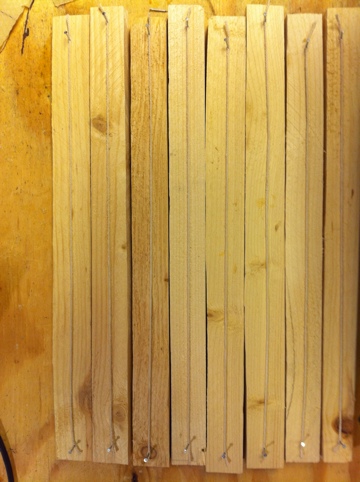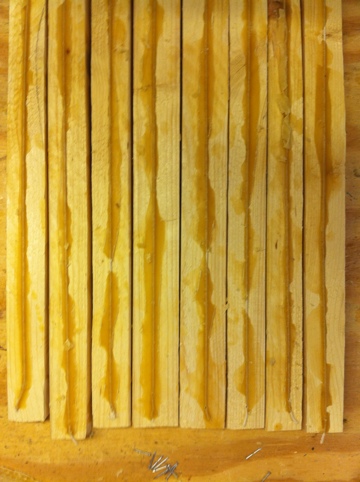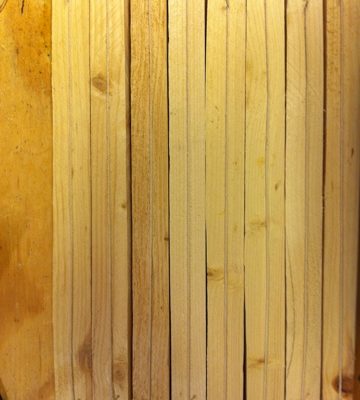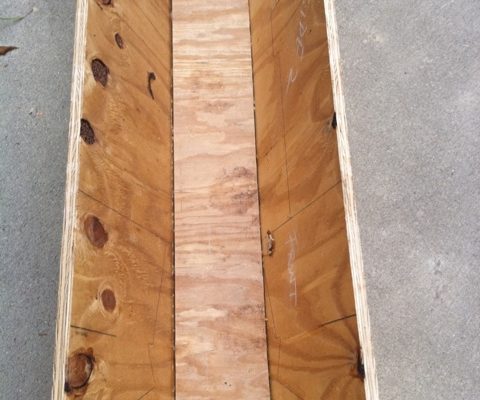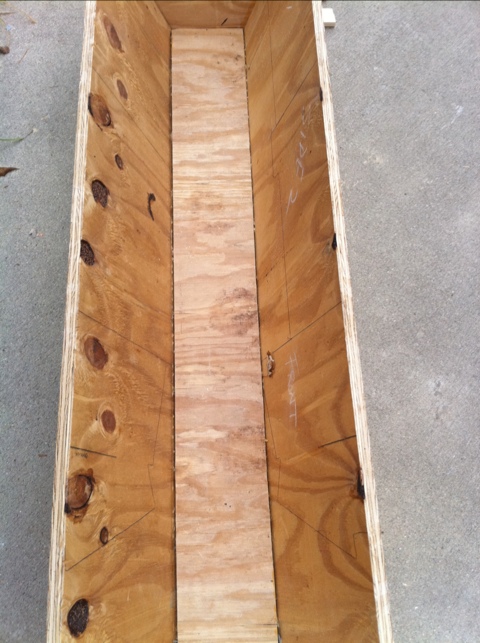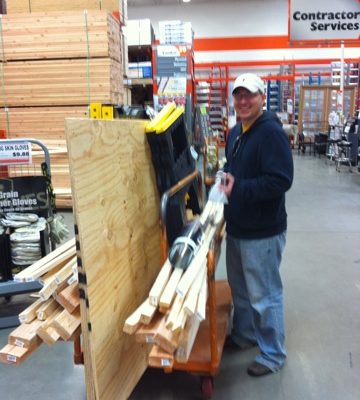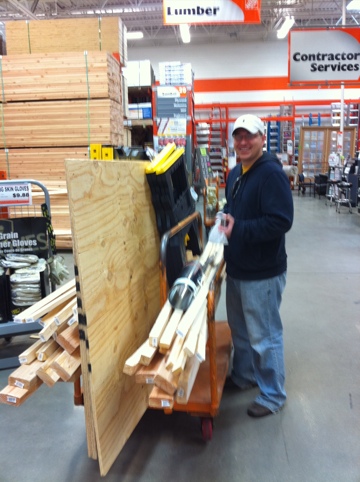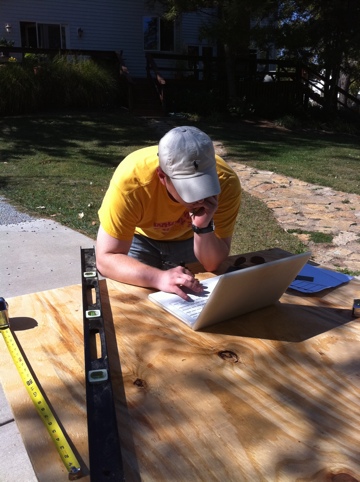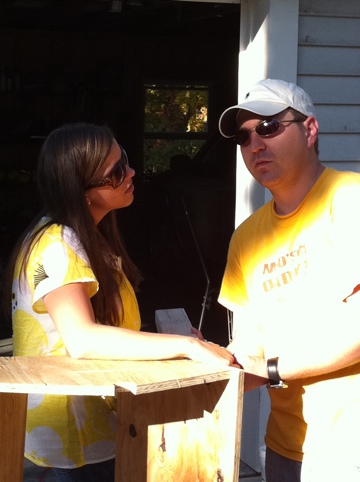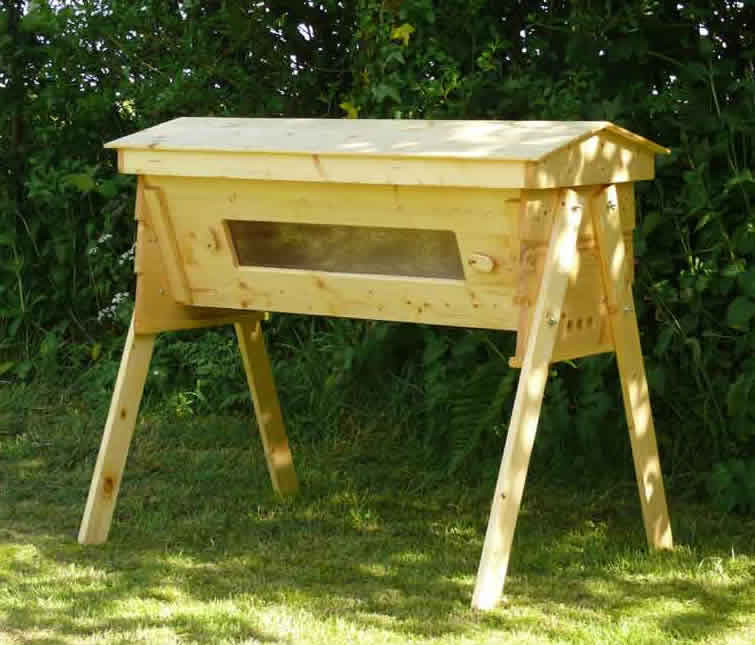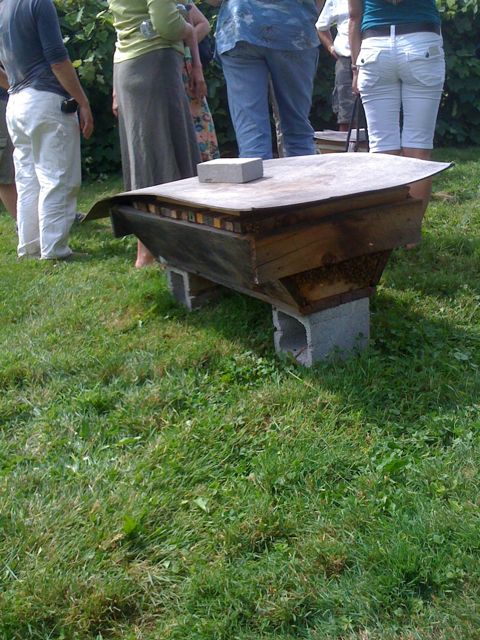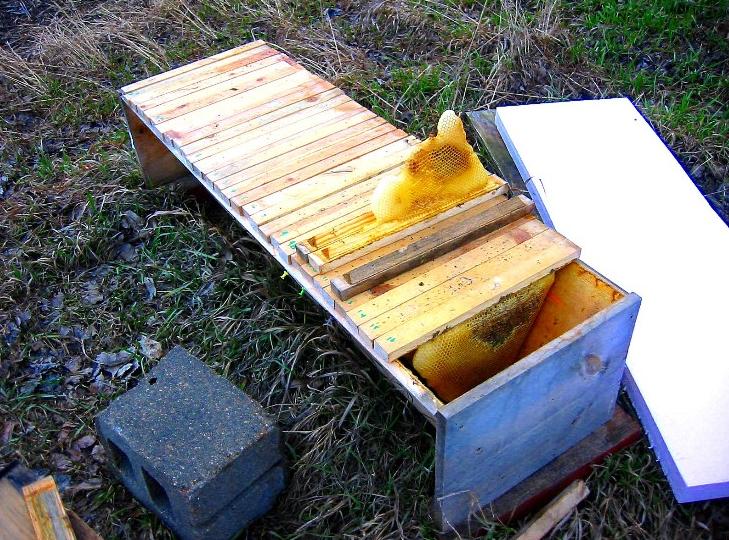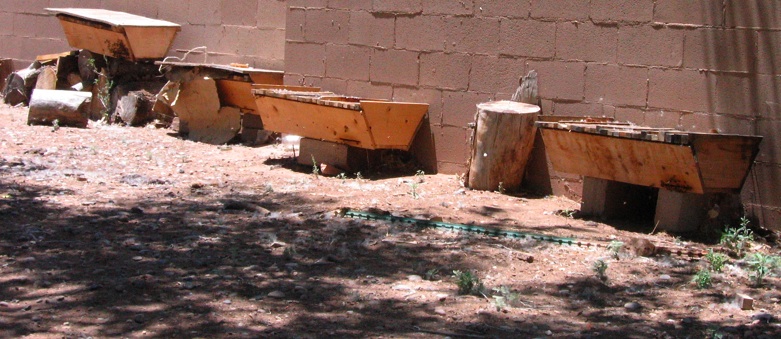I’m learning that the least important part of a hive is the hive body. The most important parts of the hive are the frames on which the bees will build comb. Bees use comb for EVERYTHING. I like to think of the hive body as the outside walls of a house. The combs and the cells from which the comb is built are akin to the rooms and the cabinets and the closets.
A top-bar hive utilizes only a piece of wood on which bees will build their comb. It’s stretched across two boards. Bees will build their comb from the top bar and then fill the cavity of the hive body below it. They will (almost) always build their comb within a certain thickness.
I cut the top bars in keeping with the width at which bees build comb (1 1/4 inches for brood, and 1 1/2 inches for honey. Not that it’s ever that precise or simple). Then, because I’m committed to a simple approach to keeping bees, I used only a piece of string and some melted beeswax as a comb guide (if bees have a guide encouraging them to build their comb beginning right here and going in this direction, they get right to work doing it. Otherwise, you have to straighten out a lot of false starts. Which is fine in nature, but not if we’re going to be removing and handling the frames).
The string is raised just enough for bees to begin their work. The wax not only attaches the string to the bar, but it smells right…as if to say, others have built here before you…now it’s your turn.
